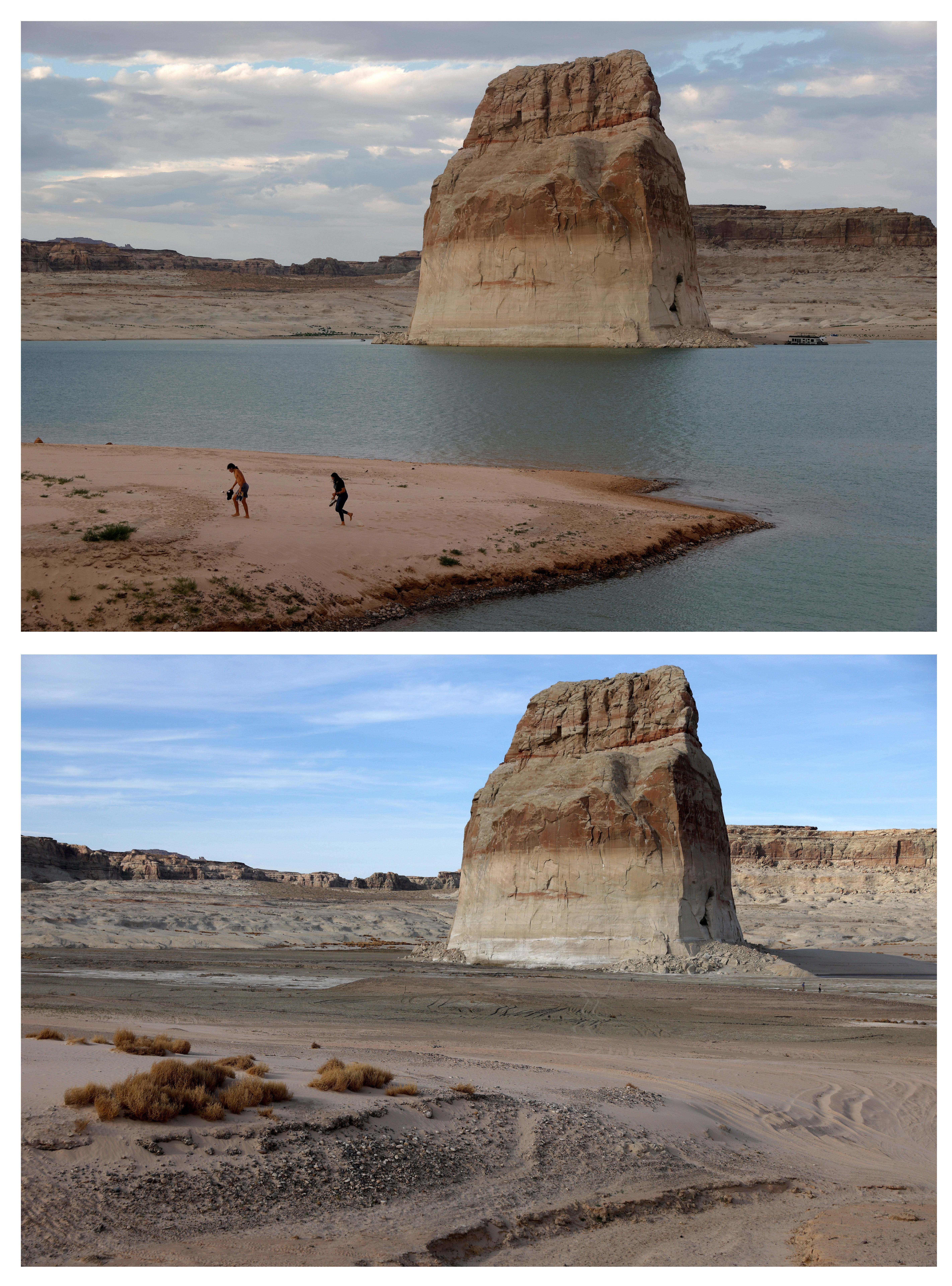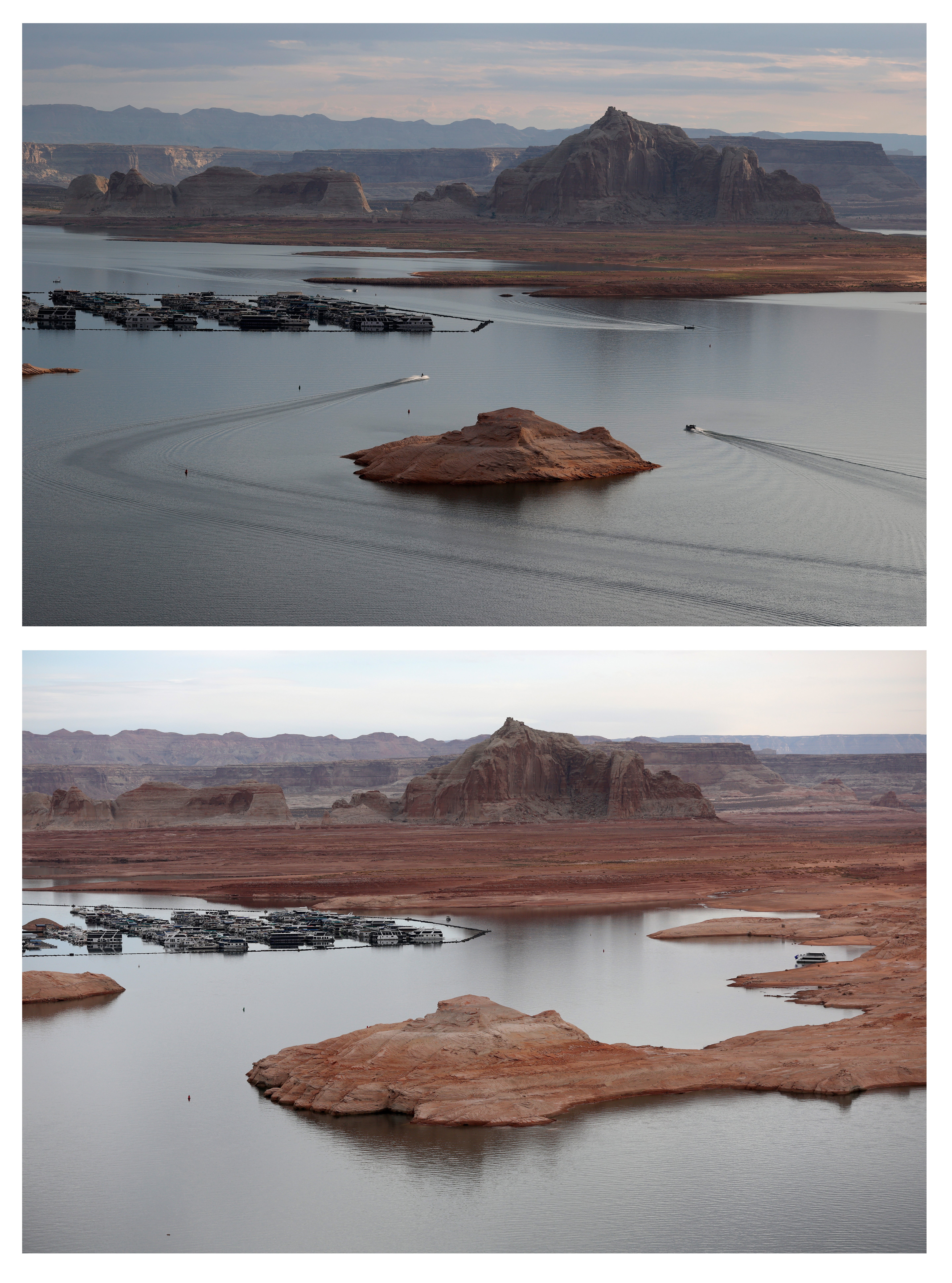Shock before and after pictures show how water supply at crucial Lake Powell has dried up amid climate crisis
Reservoir could stop generating hydropower for millions soon
The climate crisis is happening all around us, all the time, but few places illustrate its dramatic effects better than Arizona’s red rock Lake Powell, the second-largest man-made reservoir in the country, which supplies water and power to millions throughout the West.
The reservoir is only about 24 per cent full, the lowest level since 1963, when the reservoir was created alongside the Glen Canyon Dam to serve as the West’s water “bank account.”
Photos of iconic sites at the reservoir, including Lone Rock Beach, now show sandy lake bed with dried up plants which have appeared in the span of just a year.
What’s underway at Lake Powell, however, is far from just a shocking image.
The reservoir supplies more than 40 million people across seven US states, multiple tribal nations, and Mexico with water for irrigation and drinking.

The falling lake levels, thanks in large part to the climate change-inflected “megadrought” causing the driest conditions in over 1,000 years, are threatening to suspend hydropower derived from the reservoir too.
In mid-March, water levels fell below 3525 feet (1075 m), just 35 ft (11m) the “minimum power pool” waterline needed to continue moving the turbines at the Glen Canyon Powerplant, which supplies low-cost energy to 5 million people across Arizona, Colorado, Nebraska, Nevada, New Mexico, Utah, and Wyoming.
Officials from the US Bureau of Reclamation expect water levels to bounce back somehow with snow melt from the Rockies, but caution far more needs to be done in the long term.

“Spring runoff will resolve the deficit in the short term,” Wayne Pullan, regional director for the bureau, told The Associated Press. “However, our work is not done.”
Arizona, Nevada, California, and Mexico have all implemented mandatory and voluntary water cuts in response to the ongoing crisis.
The Navajo nation’s Tribal Utility Authority, one of 50 tribal energy suppliers who rely on the dam, has said it will invest $4.5m in alternative energy sources.
The Reclamation Bureau has also diverted waters from reservoirs in Wyoming.
Join our commenting forum
Join thought-provoking conversations, follow other Independent readers and see their replies
Comments
Bookmark popover
Removed from bookmarks